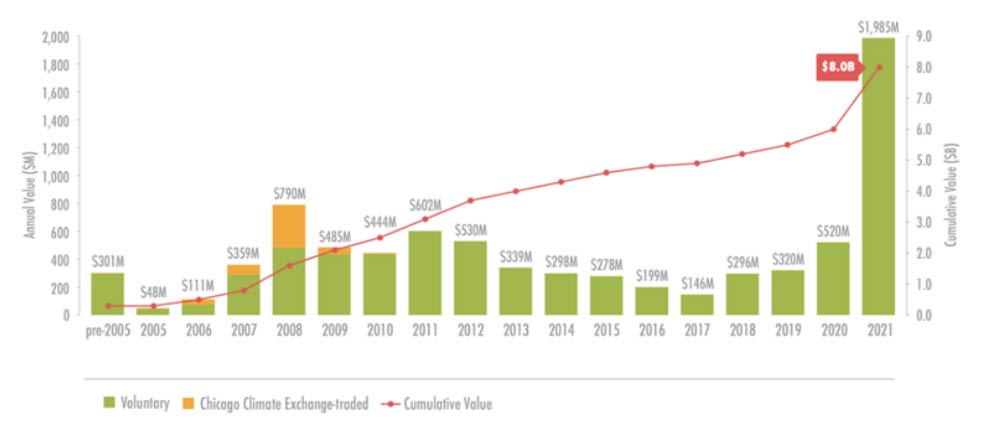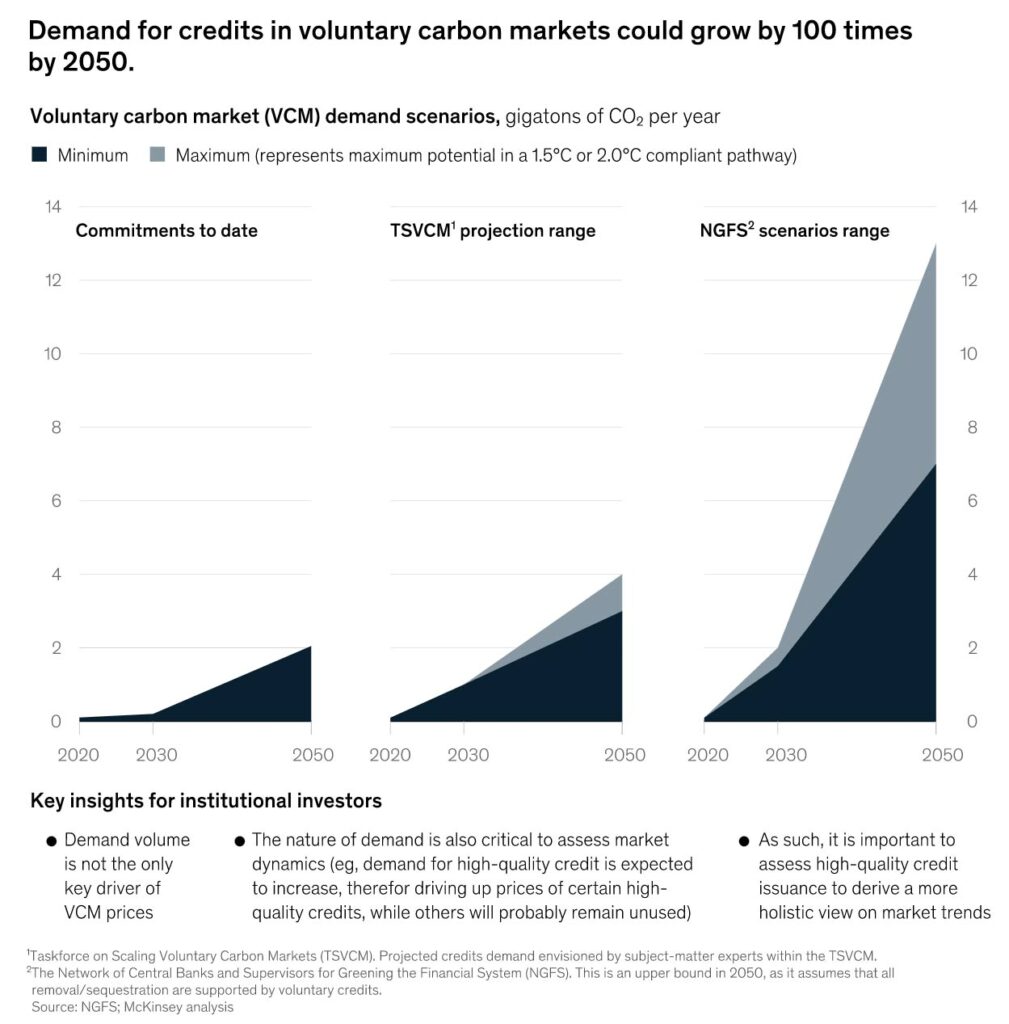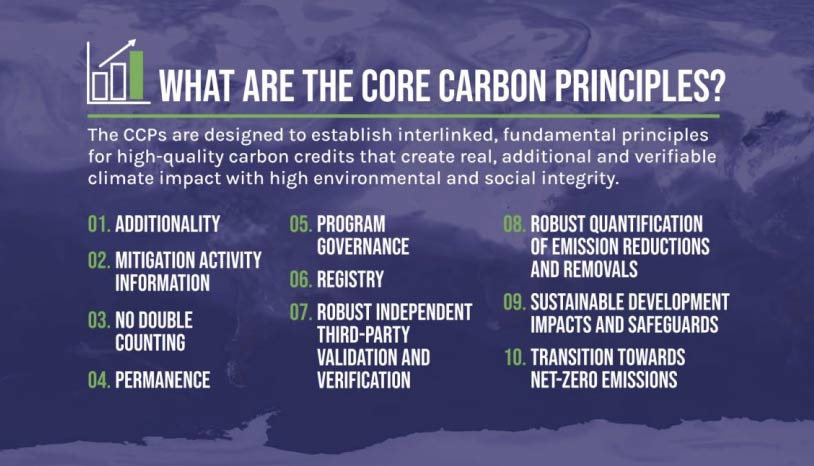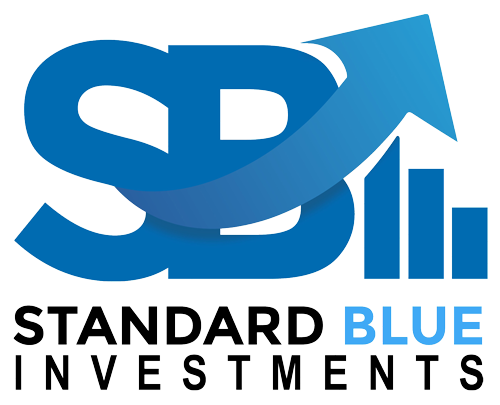The World Bank reported in May 2022, in its State and Trends of Carbon Pricing 2022, that the majority of carbon credits were issued through the top four independent global registries in the voluntary carbon market.
Carbon Market
Standard Blue aligns it projects with methodologies offered by Verra, the largest globally recognized carbon credit registry, to ensure the transparency and quality of credits associated with this project. Forest Trends’, a non-profit initiative of Ecosystem Marketplace, reported Verra as the number one credit issuing registry for 2021 with nearly 300 million tonnes of carbon verified for issuance from 110 projects.
Overall, the voluntary carbon market saw an 88% surge in credits issued over 2020 by the voluntary registries which accounted for approximately 74% of the total global supply. This increase is considered a reflection of the increase in demand from global corporations.
 Source: Ecosystem Marketplace, a Forest Trends Initiative9
Source: Ecosystem Marketplace, a Forest Trends Initiative9
McKinsey reported a year-over-year increase in the voluntary carbon market of more than 260%. This dramatic increase in supply is considered a reflection of the increase in net-zero commitments from global corporations. And, in turn, supports growth forecasts for the carbon market of 15X increase in demand by 2030 and potentially 100X increase by 2050.10

McKinsey further illustrates the projections for an increase in demand over the next twenty-five years to satisfy the needs of corporation to meet their “net-zero” and “true-zero” goals by 2050.
Quality and Integrity
The voluntary carbon market, although established more than a decade ago, has been referred to as the “wild west” of the carbon market solutions. Having no formal oversight mechanism or framework, the need and demand for quality and integrity standards are coming for registries and developers in 2023. McKinsey emphasized that “quality” will be major determinant of price for a carbon credit.
Standard Blue is committed to proactively incorporating the proposed standards from The Integrity Council for the Voluntary Carbon Market (Integrity Council), an independent governance body. The graphic below displays the ten proposed Core Carbon Principles that are currently under review and are expected to be released as standards in early 2023.

Source: ICVCM.org11
Blue Carbon
Blue Carbon is the moniker for atmospheric carbon captured by our coastal and ocean ecosystems. Mangroves forests, salt marshes, kelp beds, coral reefs and sea grass beds are some of nature’s systems that sequester and store carbon. These systems have smaller global footprints than traditional forests but they store carbon at a much higher rate.
Blue carbon has also acquired an additional moniker of “charismatic carbon”. This is due to the added benefits of biodiversity and coastal and marine conservation. These nature-based conservation efforts also provide benefits for local economies and communities.
Mangroves, based on extensive scientific research, can sequester 15-50+ tonnes of carbon per hectare of forest per year. The average terrestrial forest may store 8-12 tonnes of carbon per year with a higher risk of loss or “leakage” due to fire and harvesting practices.



